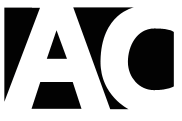
As a writer, I long approached the act of writing as a creative process. A messy, chaotic affair that could only end in tragedy and a headache, no matter how good the finished product.
At a certain point, however, I realized that the content I write for a client’s website or a short book I’m producing is different from the short stories and essays I wrote in college or for journals in which I was trying to be published shortly after graduation.
That’s not to say content for a website or a marketing campaign is easier; it’s just that we know a lot more about works and what doesn’t. When I write a piece of copy for a client’s website, I know how long it needs to be, how often to use key phrases related to their industry, how much white space to use between paragraphs, and what call to action I’m going to embed at the end to drive conversions.
When we know that much about a piece of content even before we write, it’s possible to streamline a lot of the process. That’s where a good checklist comes in.
Well written checklists are not designed to replace or eliminate creativity. The purpose is to automate all the stuff I already know how to do and speed up the creation process from start to finish. With a good checklist in hand, I can do more research, spend more time telling my story, and pass the finished piece through an extra round of QC without impacting my timeline.
What You Can Automate with a Content Checklist
So, what falls under the umbrella of “mindless” enough that we can automate through checklist? Here are 10 things I’ve identified that can be streamlined sufficiently through a content-focused checklist.
- Headline Creation – Do your research to see what works and what doesn’t when creating headlines. Look in Google Analytics to see which pages have the lowest bounce rates, highest on-page time, and most overall conversions. Use this data to set best practices based on your audience.
- Length and Layout – Bare minimum should be 350+ words with no more than 4-5 lines per paragraph. Adjust this to match the basic needs of your audience as well.
- H2 Placement – Based on the length and layout requirements, set a requirement for H2 use. For example, when I request 400+ words, I also request two H2 titles in the article of 4-7 words each.
- Idiom and Style Adherence – Make it clear in your checklist the type of language and style that should be used. How formal should it be? What’s the rule on Oxford commas? Should you avoid the use of colloquial English completely? Is the client in Canada? This list might be long, but a checklist will speed up the QC process.
- Keyword Optimization – Which terms should be optimized for and how often should they be used?
- CTA Placement – Where in the post will you include call to action buttons or links and what will the target be?
- Cross Linking to Other Posts – How many times per page will you link to another internal page? What about external posts or content that was used as research?
- Quality Control and Editing – Create a strict checklist of all items to check during editing. This can include sentence and paragraph length, common misspellings, comma usage, bulleted list use and whatever else crops up as a frequent problem.
- Publishing – Create a detailed checklist for publication of content on the platform you use, whether it is WordPress or another CMS. Include rules for use of images, H1 and H2 tagging, whether categories and tags are used for blog content, etc.
- Promotion – Create a separate checklist for how you roll out new content and promote it. What social channels will it go on? Where will you promote it internally? Do you have an email list it will go to?
Each of these items can be automated to a significant degree, leaving only a handful of items leftover that a writer should focus on as the “creative’ elements of the piece. Things like the actual writing of that content.
How to Create Your Checklist
Like the idea of cutting out a big chunk of repetitive, brain-power consuming steps? Here is how to create a checklist for your own process. Keep in mind that every piece of content is different and so too is every client, stakeholder, website, or property about which you are writing.
If you work with dozens of clients, you may find yourself tweaking this checklist to match the needs of each one, but even then it is worth the time investment to have a process in place that reduces errors, improves quality, and speeds up production – both for you and your team if you have one.
- Record every action you take while writing – Keep a journal of what you do when writing a piece, even the small, seemingly inconsequential steps. Be as detailed as possible.
- Evaluate the creation process for at least three pieces of content – Do this for three pieces of like content. Don’t just use a single post as a sample. Do it for three different posts to see what remains the same across all content.
- Look for common threads and any steps that are the same across all content – If there are common threads, take note as these will form the core of your checklist.
- Build a checklist in Google Drive or Excel listing these steps – Create your checklist in a spreadsheet to start. This will allow you to easily edit and share with colleagues.
- Use the list of 10 automated items above to fill in additional steps – Review the list above for other steps or actions you may not have included in your checklist.
- Create an “owner” for different steps of the process – If multiple people will be involved with the steps in a checklist, assign them as such, either in the spreadsheet or through another system.
- Move your checklist into a sharable space like Trello – Trello is a powerful visual card-based allocation system that can often replace your spreadsheets. It also allows you to include checklists at each step of the process and assign stages to individuals.
The time it takes to create this process will be more than made up for when your team starts filing on all cylinders. And if you are a freelance writer or simply work in a small company where you wear many different hats, this is going to free up additional time and help you get more out of your days while writing.
Want to see what this would look like in a Trello board? Click here to see it laid out. You can also download this checklist in a ready to use Excel spreadsheet by clicking below:

If you are interested in learning more about content creation tips and tricks or general productivity, make sure to signup for my list. You’ll receive first dibs on all new content and special coupons and codes when I launch a new product or course.





